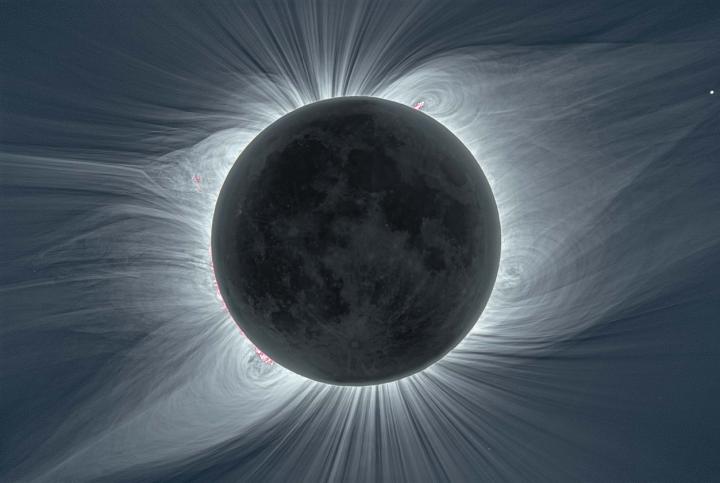
Credit: American Astronomical Society (AAS)
WASHINGTON — About 17 years ago, J. Martin Laming, an astrophysicist at the U.S. Naval Research Laboratory, theorized why the chemical composition of the Sun’s tenuous outermost layer differs from that lower down. His theory has recently been validated by combined observations of the Sun’s magnetic waves from the Earth and from space.
His most recent scientific journal article describes how these magnetic waves modify chemical composition in a process completely new to solar physics or astrophysics, but already known in optical sciences, having been the subject of Nobel Prizes awarded to Steven Chu in 1997 and Arthur Ashkin in 2018.
Laming began exploring these phenomena in the mid-1990s, and first published the theory in 2004.
“It’s satisfying to learn that the new observations demonstrate what happens “under the hood” in the theory, and that it actually happens for real on the Sun,” he said.
The Sun is made up of many layers. Astronomers call its outermost layer the solar corona, which is only visible from earth during a total solar eclipse. All solar activity in the corona is driven by the solar magnetic field. This activity consists of solar flares, coronal mass ejections, high-speed solar wind, and solar energetic particles. These various manifestations of solar activity are all propagated or triggered by oscillations or waves on the magnetic field lines.
“The very same waves, when they hit the lower solar regions, cause the change in chemical composition, which we see in the corona as this material moves upwards,” Laming said. “In this way, the coronal chemical composition offers a new way to understand waves in the solar atmosphere, and new insights into the origins of solar activity.”
Christoph Englert, head of the U.S. Naval Research Laboratory’s Space Science Division, points out the benefits for predicting the Sun’s weather and how Laming’s theory could help predict changes in our ability to communicate on Earth.
“We estimate that the Sun is 91 percent hydrogen but the small fraction accounted for by minor ions like iron, silicon, or magnesium dominates the radiative output in ultraviolet and X-rays from the corona,” he said. “If the abundance of these ions is changing, the radiative output changes.”
“What happens on the Sun has significant effects on the Earth’s upper atmosphere, which is important for communication and radar technologies that rely on over-the-horizon or ground-to-space radio frequency propagation,” Englert said.
It also has an impact on objects in orbit. The radiation is absorbed in the Earth’s upper atmospheric layers, which causes the upper atmosphere to form plasma, the ionosphere, and to expand and contract, influencing the atmospheric drag on satellites and orbital debris.
“The Sun also releases high energy particles,” Laming said. “They can cause damage to satellites and other space objects. The high energy particles themselves are microscopic, but it’s their speed that causes them to be dangerous to electronics, solar panels, and navigation equipment in space.”
Englert said that reliably forecasting solar activity is a long-term goal, which requires us to understand the inner workings of our star. This latest achievement is a step in this direction.
“There is a long history of advances in astronomy seeding technological progress, going all the way back to Galileo,” Englert said. “We are excited to carry on this tradition in support of the U.S. Navy.”
###
The Space Science Division executes research, development, tests and evaluations in solar-terrestrial physics, astrophysics, upper/middle atmospheric science, and astronomy. These include instruments to be flown on satellites, sounding rockets and balloons, and ground-based facilities and mathematical models.
About the U.S. Naval Research Laboratory
NRL is a scientific and engineering command dedicated to research that drives innovative advances for the U.S. Navy and Marine Corps from the seafloor to space and in the information domain. NRL is located in Washington, D.C. with major field sites in Stennis Space Center, Mississippi; Key West, Florida; Monterey, California, and employs approximately 2,500 civilian scientists, engineers and support personnel.
Media Contact
J. Raynel Koch
[email protected]
Original Source
https:/




